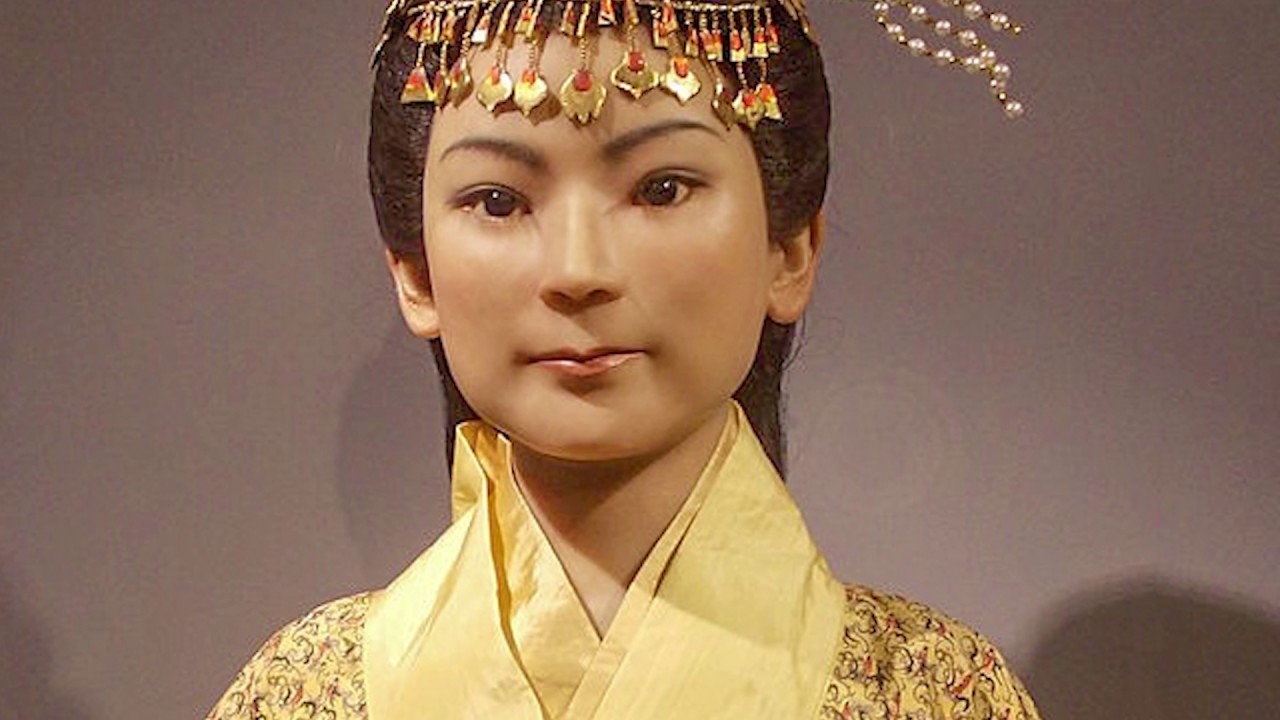
Who was Xin Zhui? Xin Zhui, also known as Lady Dai, was a Chinese noblewoman from the Han Dynasty. Her remarkably well-preserved body was discovered in the 1970s in Mawangdui, China. Why is she significant? Her tomb revealed a treasure trove of artifacts, including silk garments, lacquerware, and ancient texts. What makes her unique? The preservation of her body is so exceptional that scientists could determine her last meal, medical conditions, and even her blood type. Why should you care? Xin Zhui's discovery offers a rare glimpse into ancient Chinese life, culture, and medical practices. Ready to learn more? Let's dive into 37 fascinating facts about Xin Zhui!
Who Was Xin Zhui?
Xin Zhui, also known as Lady Dai, was a Chinese noblewoman from the Han Dynasty. Her remarkably well-preserved body was discovered in the 1970s, providing a wealth of information about ancient China.
- Xin Zhui lived during the Western Han Dynasty, around 206 BCE to 9 CE.
- She was the wife of Li Cang, the Marquis of Dai.
- Her tomb was discovered in 1971 in Mawangdui, near Changsha, Hunan Province.
- The discovery of her tomb is considered one of the most significant archaeological finds of the 20th century.
The Discovery of Her Tomb
The excavation of Xin Zhui's tomb revealed many fascinating artifacts and details about her life and times.
- Her tomb contained over 1,000 artifacts, including silk garments, lacquerware, and musical instruments.
- The tomb was buried under layers of charcoal and clay, which helped preserve its contents.
- Her body was found in an airtight, nested coffin, which contributed to its remarkable preservation.
- The tomb also contained a wealth of written documents, providing insights into Han Dynasty culture and politics.
The Preservation of Her Body
Xin Zhui's body is one of the best-preserved ancient human remains ever discovered, offering unique insights into ancient Chinese embalming techniques.
- Her skin is still soft and pliable, and her joints can still bend.
- Her internal organs are intact, and her blood vessels contain type A blood.
- Scientists believe her body was preserved using a combination of herbal concoctions and a mysterious liquid found in her coffin.
- The preservation of her body has allowed for detailed medical examinations, revealing her health conditions and cause of death.
Insights into Her Health
The examination of Xin Zhui's body has provided a detailed picture of her health and lifestyle.
- She suffered from a number of ailments, including heart disease, diabetes, and high blood pressure.
- Her arteries were clogged with fat, indicating a diet high in rich, fatty foods.
- She had gallstones, which may have caused her significant pain.
- Her body showed signs of arthritis, particularly in her lower back and knees.
Her Luxurious Lifestyle
The artifacts found in Xin Zhui's tomb provide a glimpse into her luxurious lifestyle and the opulence of the Han Dynasty elite.
- She was buried with a variety of silk garments, some of which are the oldest known examples of Chinese silk.
- Her tomb contained a large collection of lacquerware, including intricately decorated boxes and trays.
- She was buried with a set of musical instruments, including a zither and a set of bamboo flutes.
- The tomb also contained a variety of food items, including grains, fruits, and meats, indicating the importance of food in Han Dynasty burial practices.
The Significance of Her Tomb
The discovery of Xin Zhui's tomb has had a profound impact on our understanding of ancient Chinese culture and history.
- The tomb's contents have provided valuable insights into Han Dynasty burial practices and beliefs about the afterlife.
- The written documents found in the tomb have shed light on the political and social structure of the Han Dynasty.
- The preservation of her body has provided a unique opportunity for scientific study, offering insights into ancient Chinese medicine and embalming techniques.
- The artifacts found in the tomb have helped historians understand the daily life and material culture of the Han Dynasty elite.
The Mystery of Her Preservation
The exact methods used to preserve Xin Zhui's body remain a mystery, intriguing scientists and historians alike.
- The liquid found in her coffin is still not fully understood, and its composition remains a subject of ongoing research.
- The layers of charcoal and clay that surrounded her tomb may have played a role in its preservation.
- Some researchers believe that the airtight seal of her coffin helped prevent decay.
- The combination of these factors has resulted in one of the most well-preserved ancient human remains ever discovered.
The Impact of Her Discovery
The discovery of Xin Zhui's tomb has had a lasting impact on the field of archaeology and our understanding of ancient China.
- The find has inspired further archaeological exploration in China, leading to the discovery of other significant tombs and artifacts.
- The preservation techniques used on her body have influenced modern methods of studying ancient remains.
- The artifacts found in her tomb have been displayed in museums around the world, educating the public about Han Dynasty culture.
- The discovery has sparked interest in the history and culture of ancient China, leading to increased research and scholarship in the field.
The Legacy of Xin Zhui
Xin Zhui's legacy continues to captivate and educate people around the world, providing a window into the past.
- Her tomb is now a popular tourist attraction, drawing visitors from around the world.
- The artifacts found in her tomb are considered national treasures in China.
- Her story has been the subject of numerous books, documentaries, and academic studies.
- The discovery of her tomb has inspired a renewed interest in the history and culture of the Han Dynasty.
- Xin Zhui's remarkable preservation continues to be a source of fascination and study for scientists and historians alike.
The Legacy of Xin Zhui
Xin Zhui's life and death offer a fascinating glimpse into ancient China. Her remarkably preserved body, discovered in the 1970s, has provided invaluable insights into the Han Dynasty's medical practices, diet, and daily life. The discovery of her tomb, filled with artifacts, revealed the sophistication and wealth of her time. Her story continues to captivate historians and scientists alike, shedding light on a civilization that thrived over two millennia ago. From her luxurious lifestyle to the meticulous preservation methods used on her body, Xin Zhui remains a symbol of ancient Chinese culture and ingenuity. Her legacy lives on, reminding us of the rich history and advancements of the Han Dynasty. Whether you're a history buff or just curious, Xin Zhui's story is a testament to the enduring human quest for knowledge and understanding.
Was this page helpful?
Our commitment to delivering trustworthy and engaging content is at the heart of what we do. Each fact on our site is contributed by real users like you, bringing a wealth of diverse insights and information. To ensure the highest standards of accuracy and reliability, our dedicated editors meticulously review each submission. This process guarantees that the facts we share are not only fascinating but also credible. Trust in our commitment to quality and authenticity as you explore and learn with us.


